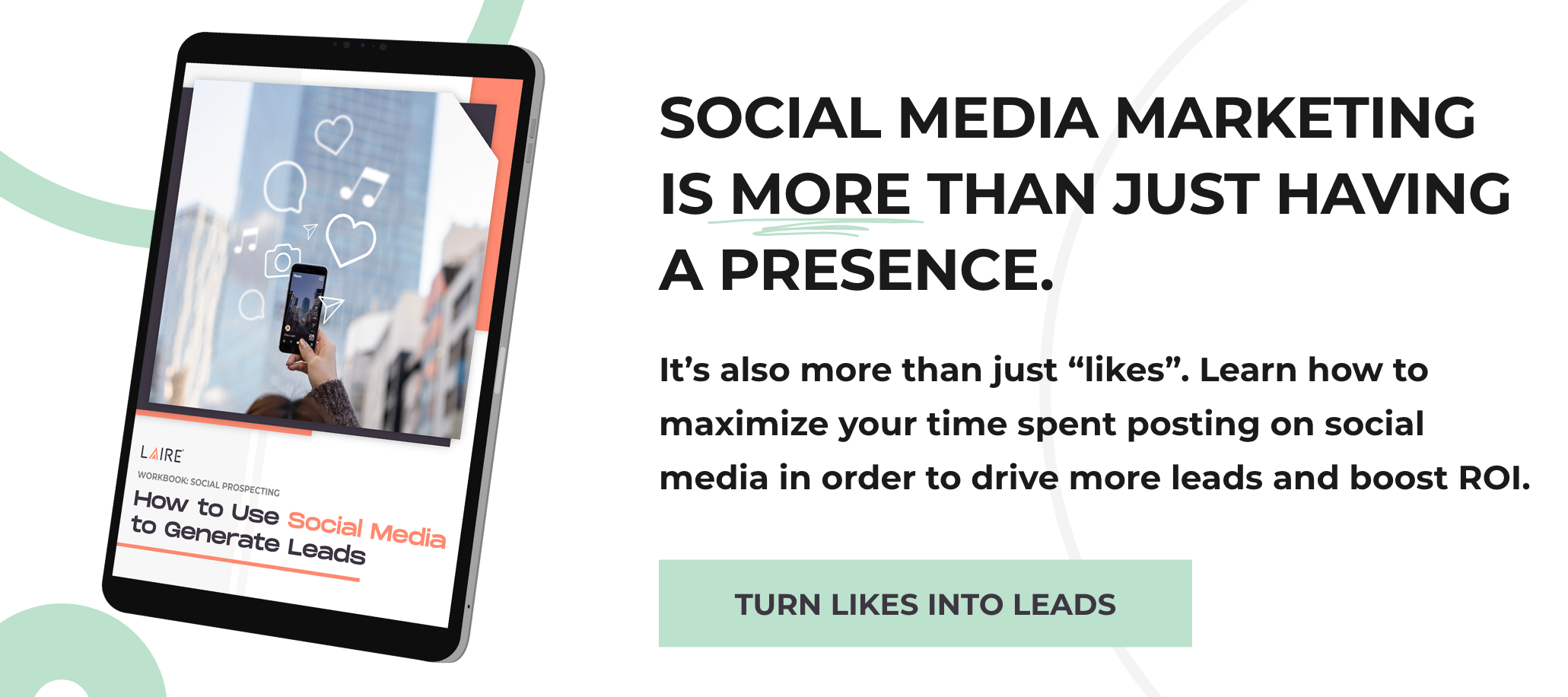There are a lot of social networks out there and you don’t have to be on all of them. In fact, it would be better if you were not. Unclear as to how Instagram would help your business? Avoid it for now. Not ready to tackle Snapchat just yet? Or maybe it doesn't make sense for your industry? Skip it.
Social media is a time-consuming but important reality for any new venture. It will help increase your Google search rankings, give your brand a human voice, and allow your clients to connect with you and start a conversation with ease. Now you just have to get started.
You may be asking questions like: Where do I begin? Which networks should I be on? What do I share? How many times should I post? Is this worth my time? Read on and we will answer all of your questions with these 10 tips.
1. Decide which audience you need to target
You have limited time, maybe limited content too, and there is a very specific audience you want to reach. Here’s a quick, non-scientific breakdown of who uses which network:
- Young audiences typically gravitate towards Snapchat, Instagram, and YouTube.
- Soon-to-be-marrieds and moms are all about Pinterest and Instagram.
- Families and Baby Boomers can be found on Facebook.
- Business types and leaders rule LinkedIn.
- Influencers and bloggers love Twitter.
2. Choose your platforms wisely
Now that you’ve learned which networks are best for your audience, let’s cross-check which social media network is best for your business. The goal here is to commit to only one or two networks that you can do WELL, and then branch out when you're comfortable (if necessary).
- Instagram and Pinterest are great for highly visual and personable companies that have access to lots of beautiful branded photography, products to promote, or candids of their team.
- Facebook and Twitter are great for businesses that generate a lot of unique editorial content that can be shared via a link. These two platforms are also a great place to engage your audience in conversations (with your brand and other followers).
- Snapchat and YouTube are ideal for brands who are into video (access to professional-level production equipment is optional) and also have a sense of humor.
3. Choose a consistent handle
Every social network requires a “handle” or name. Make yours consistent, and make sure it’s available to claim on all networks. Whatever you pick for Facebook should be used on Twitter, Pinterest, Instagram (or at least a shorter version of the core name), and any other network you sign up for. In theory, fans will start tagging you on Instagram and tweeting you on Twitter. They can’t do that if your handle is hard to find or type. For Facebook, you’ll have to claim your “vanity URL,” too - it’s much easier and prettier to share than an extra-long link with lots of numbers at the end. To claim your vanity URL, go to Facebook.com/username.
4. Create a strategy and a pipeline of content
You probably have more to share than you think. Think about the ways you can repurpose the content you already have and the steps you can take to create new content. Think outside the box and create posts that address problems, concerns, or interests your customers have that are relevant to your business. If you have a low budget and no branded content to share, consider starting a blog. Share things like:
- Peeks behind the scenes
- Ways your product or business is helpful in the real world
- Showcase your client stories and how you helped them succeed
Can you reuse any press coverage you’ve received and share it on Twitter? Or can your photographer take new lifestyle shots and share the images on Instagram? Do you have a graphic designer that can create branded graphics for Facebook? All of these are ways to connect with your clients, socially.
5. Share the correct mix of content
On every social network, you need a balanced mix of posts that self-promote, and also entertain and offer pure value to your followers. Self-promotion includes direct links to your website, peeks at company life behind the scenes, client testimonials, and news about your brand.
Testimonials can be pulled from another social platform, an email, or a blog article endorsing your product. Entertainment posts, on the other hand, can include funny photos, holiday wishes, quotes, and shared content from other resources that are interesting and relevant. It’s time to get creative, people. This is when freelance writing or graphics can come in handy.
6. Respond to comments
When your followers engage with you and comment on your posts, make sure to acknowledge them with at least a "like". Or if you want to go above and beyond, replying can make your followers feel closer to your brand. It ultimately makes your company feel more human and approachable to the outside world.
There may also be times when you encounter negative comments and reviews. Don't let them get you down or keep you from fully committing to social media. Every company deals with a not-so-great comment from time to time. It's totally normal. Instead of shying away from them, reply back and try to make the user's experience better. This can turn an unhappy customer into a brand advocate.
7. Start networking
You have to become a consumer of social media to win at social media. So no matter which network you use, you need to be actively following influencers, experts, marketers, companies, and publications in your industry. Retweet their articles, like their posts, share their updates, comment on their blogs, or link to their content. The good news is that in social media land it’s OK to "borrow", but in the form of sharing, and you should do it often. Scratch someone else’s back in hopes they scratch yours and share your content in return.
Set aside at least ten minutes each day to read your feeds. Social media dashboards like Hootsuite allow you to create themed feeds from your Twitter lists or hashtags you input. You could also set up a news aggregator like Feedly, that pulls articles from the web-based on a list of interests you've selected. That makes it much easier for you to share relevant topics on your social channels.
8. Share the links to your social platforms
Just because you build it does NOT mean they will come. Slap those clickable social icons, links, or social media handles on your website home page, business cards, email signatures, marketing materials, and everywhere else you are found.
There are no excuses for not doing this best practice. We have worked with so many companies who didn't add a Facebook icon to their homepage months after they had signed up for their business account. What a missed opportunity to talk to your target audience where they want to be anyway -- on social media!
Ultimately, your business will not benefit if people can't find you and connect. Do a Google search for free social network icons, buy stock photos of icons, or download official brand assets directly from Facebook and Twitter.
9. Drink the Kool-Aid
Every industry has a unique presence online. There are always trending hashtags, or there could be a meme making its rounds. It’s your job to research this kind of thing so you can become a part of your community. They will welcome you with open arms when you play the game and look at social media as a two-way conversation. You’ll get more followers and make important connections in the process.
Also, constantly study any analytics for your social media pages on the individual networks. Doing so will provide you with a better understanding of your audience and your community, and make sure what you’re doing is working.
10. Keep at it
We promise you can make an impact and grow your social following in as little as one hour per week. Facebook’s scheduling feature lets you schedule out posts up to six months in advance.
Social media dashboards (like Hootsuite and Sprout Social) also allow you to queue up content for multiple platforms. In theory, you could get months of content ready in one sitting.
Not sure how often to post? Here’s a quick guide to the bare minimum you should be posting on each network:
— Blog twice a month
— Post on Facebook, Instagram, and LinkedIn three times per week
— Tweet ten times per week
— Pin content (on Pinterest) 20 times per week
Abandoned accounts are worse than no social media presence at all. When you enter the social media space, you’re building a relationship with your audience, potential customers, and brand enthusiasts. Don’t let them down. Use these social media for business tips to dive in, get started, and keep it up!
Ready to assess and then grow your business on social media? To help you get started, download our FREE Social Prospecting Workbook - How to Use Social Media to Find New Leads.


